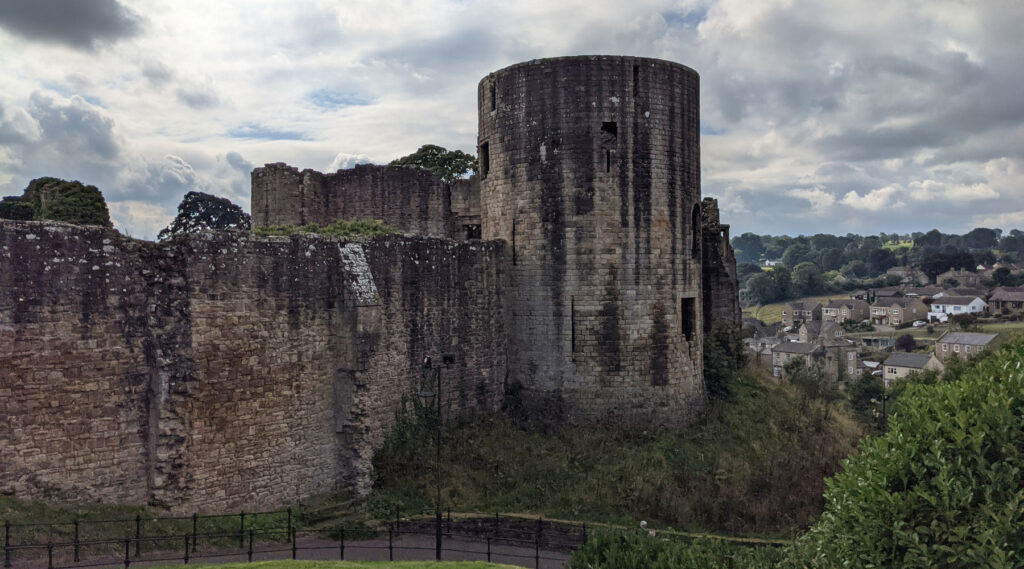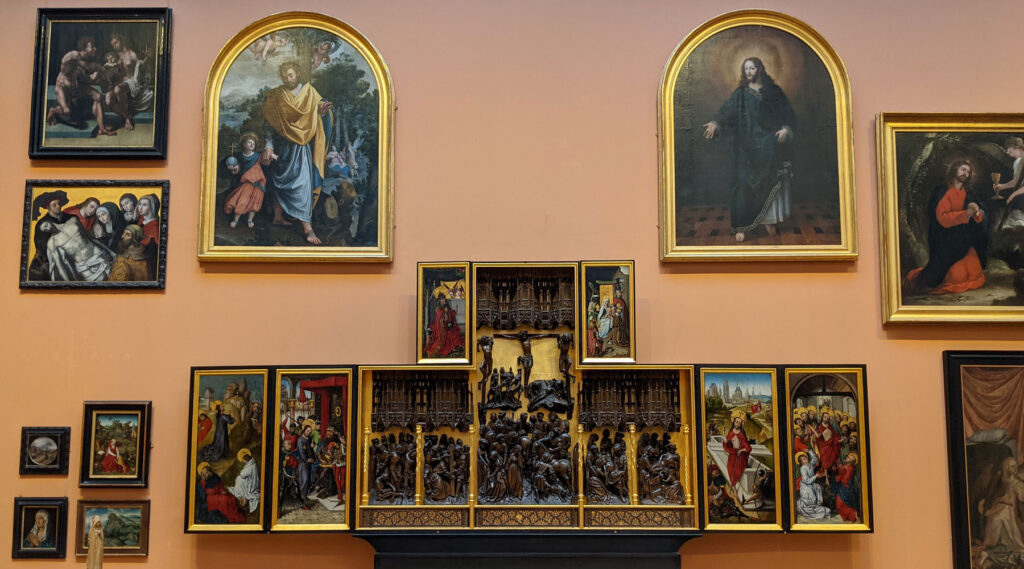A town of great antiquity with a large castle and famous museum, but also of recent notoriety has a lot more to see if you visit for more than an eye-test.
Barnard Castle
If you arrive by car from the west, the castle perched up on the steep riverside is very obvious, but if coming in by bus, the castle is almost impossible to see, as it’s hidden behind the town centre, and there’s hardly any signs pointing to it.
It’s not that it’s a small castle, quite the opposite, but that most of the street signs talk about other things. This is odd as Barnard Castle is remarkable and huge. Even though now mostly ruined, and only about half of the original site remains as a castle, it’s exceptionally good fun to visit.
The castle owes its origins to Guy de Balliol who was given the lordship of the area by King Willaim II, although it was his son who built the first stone castle here. It eventually became a royal Castle when King Richard III inherited it. It remained in royal hands until 1603, but it was already decaying and fell into ruins afterwards.
The oldest part of the castle, and the best preserved is closest to the river, with several large wards surrounding the Tower, which itself is surrounded by a very deep defensive ditch inside the castle walls. That deep ditch is wonderfully atmospheric to wander down into and peer up at the modern wooden bridges that cross into the Tower.
A number of helpful display boards point out what each area or ruin was when the castle was active, but otherwise, you’re left to wander around as you want.
The main Tower has had stairs added outside to make getting in rather easier as otherwise, it’s a very narrow staircase, and if you’re not too bad with heights, there’s a narrow staircase right up to the top.
The views over the river from the castle are also quite spectacular, whether peering through old fortifications or over the walls, it’s easy to spend rather longer than expected wandering around the castle.
The castle is managed by English Heritage and is free to visit for members or pay to go in when you arrive.
Bowes Museum
The town is more famous locally though for the museum on the edge of the town, so much so that the street signs point to it, and even the heritage markers in the town’s pavements show an image of the museum’s most famous object.
So about a 15-minute walk from the ancient castle is what appears to be an impressive French chateau. Except that it’s not, it’s the museum, and was built explicitly to be a museum, not a house.
It’s also a story of Victorian snobbishness.
In 1829, the 10th Earl of Strathmore and Kinghorne married his long-term girlfriend, Mary Millner on his deathbed to ensure their son, John, who was born out of wedlock would inherit their wealth and titles. Unfortunately, the 10th Earl’s brother disagreed, and eventually a lawsuit settled that John Bowes was illegitimate, although he did get to hold onto the family’s English estates
Society never really accepted John Bowes, and in the end, he decamped to Paris, where he met and married actress Joséphine Benoîte Coffin-Chevallier.
Between them, they became passionate art collectors, and eventually decided to build their own museum to house the collection, and maybe surprisingly considering how they had been treated, still chose to build it in England, near Barnard Castle. The French “chateau” was started in 1869, but sadly neither John Bowes or his wife lived long enough to see its completion when it opened as the Bowes Museum in 1892.
Although built as a museum, inside it still managed to have the airs of a grand country mansion, and even some of the rooms look like dining rooms and bedrooms, thanks to the collections in them.
Although there are themes to the collection, it’s so wide ranging and eclectic that it can almost be seen as a large museum of interior decoration and design. From rooms packed full of china to large galleries packed with paintings, it’s a visual feast. The gallery would impress any capital city, with paintings by Canaletto, Giaquinto, Durand-Brager, and Anthony van Dyck to name a few. A huge Altarpiece by the “Master of the View of Saint Gudule” has deeply carved scenes from the passion and death of Christ. There are only seventeen works by the Master in this country, and twelve of them are in this one display.
One of the notable collections the museum is famous for is the costumes gallery, but the most famous object here is a silver swan automaton built in 1773 and acquired for the museum in 1872. Although not working at the moment, the swan’s head moves around and dips down to catch fishes in the water.
It’s about to undergo restoration which will be carried out in the museum, which means a very rare chance for the public to see it disassembled.
Also, see if you can find the lego swan in the museum.
The museum has been described as the Wallace Collection of the North, although it’s far larger and with a much wider collection of objects to admire.
There’s a woodland to walk around outside, but do try to make sure you see the back of the museum, as it’ll clearly show an unexpectedly plain exterior compared to the grand frontage, and a reminder that this was a purpose-built museum as a gift to the nation.
The Bowes Museum is open every day, and tickets should be booked in advance from here.
What else is there to see in Barnard Castle
Quite a bit in fact for a small town.
One of the more notable things is in the middle of a roundabout in the town centre, and that’s the Buttermarket, which was built in 1747 originally as a small town hall and later jail, but as with many market towns, the ground floor was given over to the market and was used mainly by dairy sellers – hence the name.
There are quite a few churches, although only one was open on my visit, which was St Mary’s Anglican Chuch next to the Buttermarket. If so minded, head up to Holy Trinity Church which is on the other side of the river, more for the views of the town, as the church itself was closed. A new small graveyard next to it has a warning sign inside that motorists should not exceed 10mph, which even if a car could get inside it, to reach 10mph before they hit the wall would be impressive.
As you wander around, you’ll spy a lot of small blue plaques on buildings noting that they were built by Sir Somebody for a local hall, a magistrate, a mill, etc.
The River Tees runs at the very bottom of the town and is a shallow fast running river at this point. Three bridges cross the river, with the ancient stone bridge closest to the town, which looks impressive but is quite difficult to see from the riverside itself, so best seen from inside the castle.
A couple of places trade on the short visit by Charles Dickens to the town, but it’ll be a long time before it shakes off its more recent eye-test fame.
A local pub invites you to “cummins” for a drink, and a shop sells Dominic Cummings souvenirs. And yes, there’s an optician in the town centre. An unlikely new addition to the tourist trail.
Eye tests aside, it’s a very pretty little town to visit, and with a huge castle and museum to see, it easily filled an entire day.
Getting to Barnard Castle
The easiest way from London, if not driving to test your eyes, is by train from King’s Cross to Darlington, which takes around 2.5 hours. Sometimes LNER has deals on train tickets.
From there, it’s a 40-minute bus ride to Barnard Castle. The buses are by Arriva on routes X75 and X76 roughly every half hour from outside Darlington town hall, and it’s easiest to download their smartphone app and buy a day pass in advance which you can then activate on the day you visit.






















